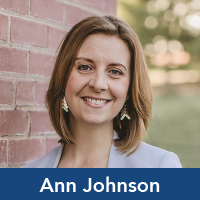For the past year, I have been on a journey to improve my relationship with the lay community as an IRB director. I say “improve,” but what I really mean is begin my relationship with the lay community, because honestly, they didn’t know I existed. In fact, I would argue that most normal people going about their day-to-day lives don’t know that IRBs exist.
The fact that IRBs are invisible to most human beings can make it feel impossible to meaningfully engage with the lay community. And yet, community engagement should be a valuable part of what we accomplish in the IRB’s mission to serve the community.
Based on my past year of experience, I know that I am not an expert in community engagement; I have a lot left to learn. But I do have a smidgen of wisdom to share when it comes to beginning your relationship with the lay community. I hope my practical tips can be helpful to all the IRB directors out there who want to dip their toes a little deeper into the community engagement pool.
First, you just have to start getting to know people. I asked around and learned the names of some community leaders in my area, and I started inviting them to lunch. The purpose of the lunch was simple: I wanted to get to know them as individuals and as leaders in their sphere. I wanted to learn their passions, their hopes, and their goals. And in turn, most of them also wanted to learn the same things about me. It opened doors to more conversations, it formed friendships, and it built trust. And it let a nice handful of community leaders know that I and the IRB exist. Now, we contact each other regularly to catch up, and I am keeping those relationships going.
Second, I started expanding my circle of non-scientific community members who serve on the IRB. We all know it can be challenging to convince someone from the community to give their time, talents, and resources to the IRB. During my time getting to know people over lunch, I was able to build relationships that led to the recruitment of new community members for the IRB. And because of my newly established relationships, the individuals who volunteered to serve tended to have more trust for me and feel a stronger dedication to the cause. It was easier to onboard them. It was easier to involve them in IRB reviews. It was easier to learn from them. It has made the IRB membership more diverse and generated high-quality discussion at the board meetings.
Third, I started asking for money. I know what you are thinking: no one wants to give you extra money for this. But I started small. I asked for a small amount of one-time pilot funding from sympathetic leaders to try some new things. I set the goal of proving my efforts were worth it, so that leaders would be compelled to give a little more money. It worked and I got some money for another year. My projects are small; they aren’t racking up huge numbers of social media followers or generating work for countless full-time employees. But they have meaning to the small number of people who now know that IRBs exist. The projects have also been compelling enough that more money is potentially on the table. Ask for something small, and let it grow from there.
Lastly, be creative. I use my sewing and design talents to create research ethics-themed fabric and textiles. My colleague, Annie Risenmay, decorates research ethics-themed cookies. Another colleague, Lisa Rigtrup, put together a FanX panel that functioned as a mock-IRB meeting to review the work of fictional scientists, like Dr. Emmett Brown from Back to the Future. Did any of this go viral? No (not yet). But it was all so fun and a few more people learned about the principles of the Belmont Report than would have otherwise.
From one beginner to another: you can do it. We are in this together. I can’t wait to learn what you do, too. Now, go forth and engage!
The 2022 PRIM&R Annual Conference (PRIMR22) will bring the entire research community together and serve as a forum for discussing common themes that span the research enterprise, including community engagement and science communication. Attendees will have the opportunity to network and address challenges facing research programs, their administrators, and leaders.
PRIMR22 will take place online December 12-15, with in-depth workshops on December 6 and December 9.
 Ann Johnson, PhD, MPH, is the Director for the University of Utah IRB and has been with the organization since 2006. She participates in national research and dialogue on emerging issues in the field of research ethics, including return of research results to the public, single IRB methodology, exceptions from informed consent in emergency research, and more equitable and diverse population inclusion in human subject research. Additionally, Dr. Johnson conducts qualitative research with a focus on applied research ethics. She has been a leader in establishing a single IRB process for the University of Utah, as well as the NCATS-funded Trial Innovation Network. She has taught undergraduate- and graduate-level courses and is instrumental in continuing research education for the University of Utah, providing instruction on consent form models, establishing data and tissue repositories, investigator-initiated clinical trials, and managing reportable events. She also serves as a site visitor for AAHRPP.
Ann Johnson, PhD, MPH, is the Director for the University of Utah IRB and has been with the organization since 2006. She participates in national research and dialogue on emerging issues in the field of research ethics, including return of research results to the public, single IRB methodology, exceptions from informed consent in emergency research, and more equitable and diverse population inclusion in human subject research. Additionally, Dr. Johnson conducts qualitative research with a focus on applied research ethics. She has been a leader in establishing a single IRB process for the University of Utah, as well as the NCATS-funded Trial Innovation Network. She has taught undergraduate- and graduate-level courses and is instrumental in continuing research education for the University of Utah, providing instruction on consent form models, establishing data and tissue repositories, investigator-initiated clinical trials, and managing reportable events. She also serves as a site visitor for AAHRPP.


This is so heartwarming and beautiful to read, Ann. Every small seed you have sown will blossom into a garden of community engagement!
Ann, I love this approach to recruiting different community members to the IRB. We just lost our primary community member, and I am looking to recruit a replacement. I am working with a colleague in my office to schedule an introductory meeting with some of our local community contacts. Do you have some language I could provide my colleague to use when he contacts members of our local community? Please let me know. Thank you.